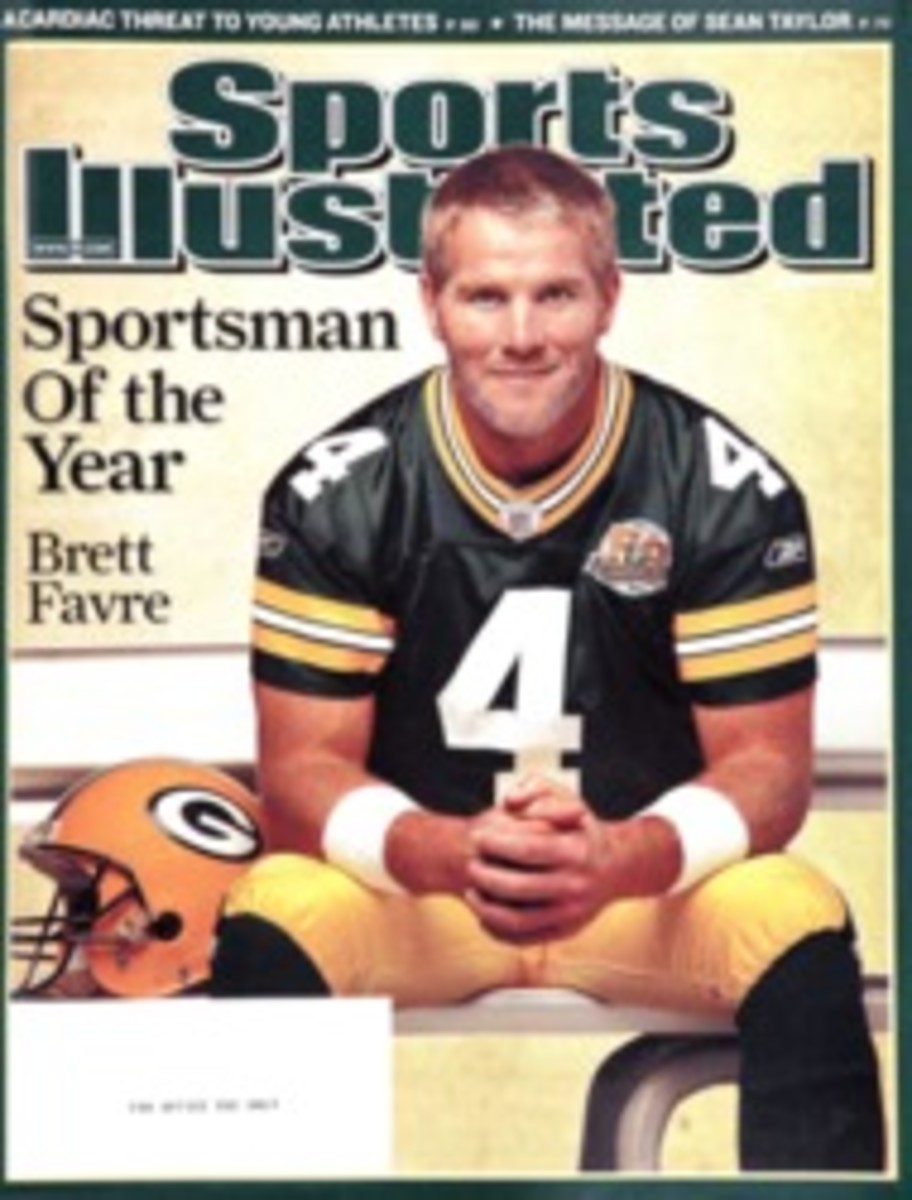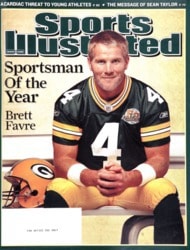
The Man Who Jumped Over Stuff
AT THIS remove,nearly 30 years after he jumped over his last bus (or canyon or aquarium orwhatever), it's difficult to understand just what Evel Knievel's appeal everwas. First of all, to judge from his many obituaries (he died of idiopathicpulmonary fibrosis? Not wear and tear?), it appears he was not all that good atthe craft of daredevilry. His curriculum vitae, running to many boxes of X-rayfilm, actually predicted a high likelihood of disaster when it comes to the jobof spanning cars and fountains with a motorcycle. To have broken as many bonesas he did, perhaps 40 ("Not every bone in my body," he once told me."That's a common misconception"), suggests he might have lived evenlonger (wait! he lived to 69?) had he remained in an original employ—miningcopper in the Anaconda.
Still, hispopularity was undeniable, breathtaking even. By escalating simple childhoodstunts into the realm of near-certain morbidity (genius!), he achieved a fame,at least recognition, that not even today's superstars could ever enjoy.Michael Jordan, Alex Rodriguez or Tom Brady are niche players when comparedwith Knievel in his day. Coast-to-coast, Americans, every one of them, nomatter their preference for this sport or that, recognized the sheer fun of aman making poor decisions, his life in the balance. Evel's jumping over a sharktank? Ratings soared. His Wide World of Sports appearances were national eventsin the '70s.
This country'spreference for cartoonery was just being felt back then, and the sight of a mandraped in an American flag (asbestos, to be sure), soaring impossible distanceson a Harley-Davidson XR-750, was money. Well, it wasn't the distances thatcounted. Starting with a stunt that required him to jump 40 feet of parked carsand a box of rattlesnakes (which he naturally crunched, freeing the reptiles),Knievel immediately recognized the value of novelty over success. "Iknew," he said, "I could draw a big crowd jumping over weirdstuff."
In other words,Knievel was a more dedicated showman than he was motorcyclist. But that's allthat mattered. By the time he worked his way up to the Snake River Canyon jumpin 1974, his bona fides as a swaggering risk taker, if not a completelycompetent stuntman, were accepted nationwide. Nearly seven years before, he'dtried to jump the fountains in front of Caesars Palace, on live TV, and prettymuch come completely apart. You probably saw the footage on the TV news whenhis death was announced; he came down wrong and flopped across the pavement,rag-doll-like, for 165 feet until he ended up against a brick wall. He was in acoma for a month afterward, having broken ribs, hips, pelvis and skull. At thetime, this was about all you had to do to become famous. And rich. For the1,600-foot, rocket-powered jump over Idaho's Snake River, he got $6 million inclosed-circuit TV dough. Even though he pulled the rip cord suspiciouslyquickly and floated harmlessly to the canyon floor.
But if he couldn'talmost die every time, he could come close. He erased whatever disappointmenthis public had the next year when he took his act to Wembley Stadium in Londonand broke his pelvis, vertebrae and hand trying to leap 13 double-deckers.Then, to reassure his public further, he broke an arm and collarbone afterotherwise successfully avoiding 13 sharks. Weird stuff was the ticket.
Thesuccess-to-failure ratio is not fairly represented in the above examples. Hecleared plenty of other weird stuff. But the life—3 1/2 years in hospitals, heonce calculated—was fairly harrowing, and it got to point that his pregame shotof Wild Turkey was no longer enough to settle his nerves. "The feeling justgot worse," he told me, during a nostalgic swing through Caesars Palacenearly 10 years ago. "Got so I couldn't pull the trigger."
But he hadinadvertently spawned a remarkable industry—Evel Knievel toys, lunch boxes,pinball machines—that grew well beyond his feats. He was the first sports heroto translate serial surgery into an income stream. Of course, even that was atrisk with Knievel, and by the time he had whacked a former publicist upside thehead with a baseball bat in 1977 (and was sentenced to six months in prison),he had forfeited most of his 16 boats, houses and mink coats. Thediamond-encrusted walking stick filled with Wild Turkey? Gone. Also, more tothe point, the public's goodwill. "Those were a bad 10 years," he toldme. "Made $60 million, spent 61." Let his nation down.
Oddly, though, hecame out of that richer and just as beloved as he had been before. And in the'90s his endorsement success, riding that wave of nostalgia in part, restoredhim to solvency and then some. It was one landing he nailed. When I rambledwith him in Las Vegas (by then he was reduced to light beer, pending a livertransplant), he was cashing weekly $10,000 checks for pain-relief gizmos (theStimulator, remember?), fielding film offers, living the life, enjoying theeverlasting residue of those botched jumps. It was mystifying until you thinkabout it, but America, perhaps secretly, admires conviction over common sense,imagination beyond any grasp of reality, resiliency past adult duty. We likewinners, sure, but every once in a while, give us a guy like Evel, somebodywilling, at whatever cost, to tease all that fun out of failure.
ONLY AT SI.COM Yourone stop for offbeat humor and the wackiest sports stories and links, includingHot Clicks and the Daily List, is SI.com/extramustard.
"Knievel was a more dedicated showman than HE WAS AMOTORCYCLIST."
PHOTO
PHOTO ILLUSTRATION BY JOHN UELAND

